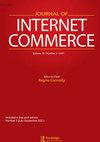积极购买型UGC对受众购买意愿的影响:纽带强度、良性嫉妒和购买类型的作用
IF 4.1
Q2 BUSINESS
引用次数: 2
摘要
在社交媒体上,消费者创建用户生成内容(UGC)来展示他们购买的商品,这是一个越来越普遍的现象。这种类型的UGC是以购买为中心的。UGC的观众既可以是亲密的朋友(强关系),也可以是熟人(弱关系)。本文通过五项研究来填补纽带强度、购买意愿和良性嫉妒之间关系的研究空白。前三项研究的结果一致表明,购买者与观看者之间的纽带强度正向影响观看者的良性嫉妒感,而良性嫉妒感又反过来影响观看者对展示购买的购买意愿。此外,另外两个实验发现购买类型是中介效应的调节因子。具体来说,当购买是物质购买而不是体验购买时,良性嫉妒介导了效果。这些发现不仅揭示了以购买为中心的UGC的观看者是如何受到纽带强度和良性嫉妒的影响的,也证明了购买类型在以购买为中心的UGC效果中的作用。本研究扩展了多个研究流,包括关系强度、社会比较和购买类型。此外,该研究还为广告、UGC营销和网红营销的实践提供了重要启示。本文章由计算机程序翻译,如有差异,请以英文原文为准。
The Impact of Positive Purchase-Centered UGC on Audience’s Purchase Intention: Roles of Tie Strength, Benign Envy and Purchase Type
Abstract An increasingly ubiquitous phenomenon on social media is that consumers create user-generated content (UGC) to display their purchases. This type of UGC is purchase-centered. The viewers of the UGC can include both close friends (strong ties) and acquaintances (weak ties). This paper conducted a series of five studies to fill research gaps about the relations between tie strength, purchase intention, and benign envy. The results of the first three studies consistently show that tie strength between the buyer and the viewers positively influences the viewers’ feeling of benign envy, which in turn affects viewers’ purchase intention toward the displayed purchase. Furthermore, two additional experiments identify purchase type as a moderator of the mediation effect. Specifically, benign envy mediates the effect when the purchase is a material one but not an experiential one. These findings not only reveal how the viewers of purchase-centered UGC are influenced by tie strength and benign envy, but also demonstrate the role of purchase type in the effect of purchase-centered UGC. This research extends multiple research streams including tie strength, social comparison, and purchase type. Additionally, this research provides important implications for the practices of advertising, UGC marketing, and influencer marketing.
求助全文
通过发布文献求助,成功后即可免费获取论文全文。
去求助
来源期刊

Journal of Internet Commerce
BUSINESS-
CiteScore
10.50
自引率
7.00%
发文量
18
期刊介绍:
The business world has undergone many changes because of information technology, and the impact of the Internet may cause one of the biggest yet. While many people use the Internet for educational and entertainment purposes, organizations and companies are looking for ways to tie their internal networks to this global network to conduct electronic commerce. While companies have been conducting business electronically with suppliers and customers for many years, conducting online commerce via the Internet offers even greater opportunities for multinational, national, and even small businesses to cut costs, improve efficiency, and reach a global market.
 求助内容:
求助内容: 应助结果提醒方式:
应助结果提醒方式:


